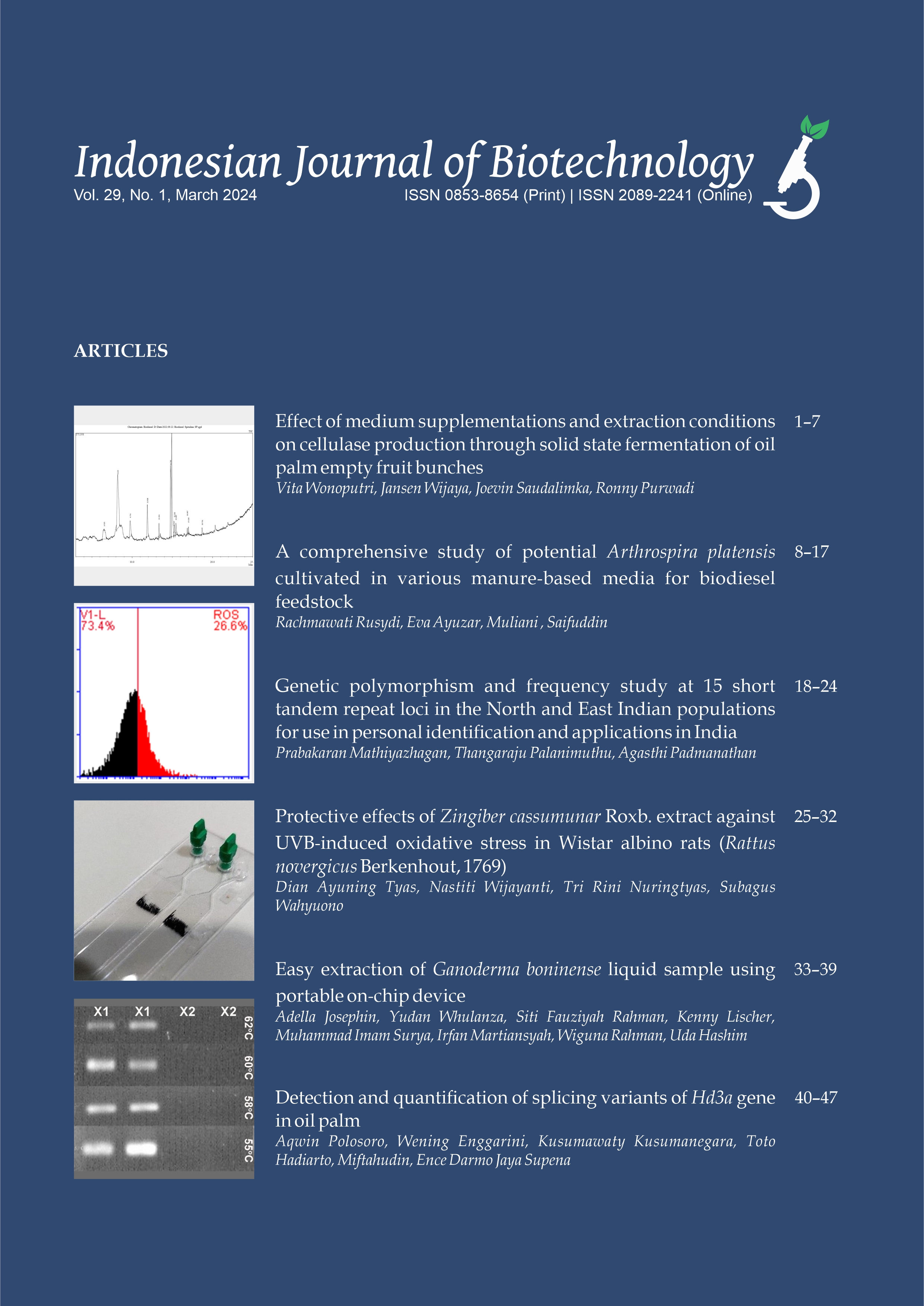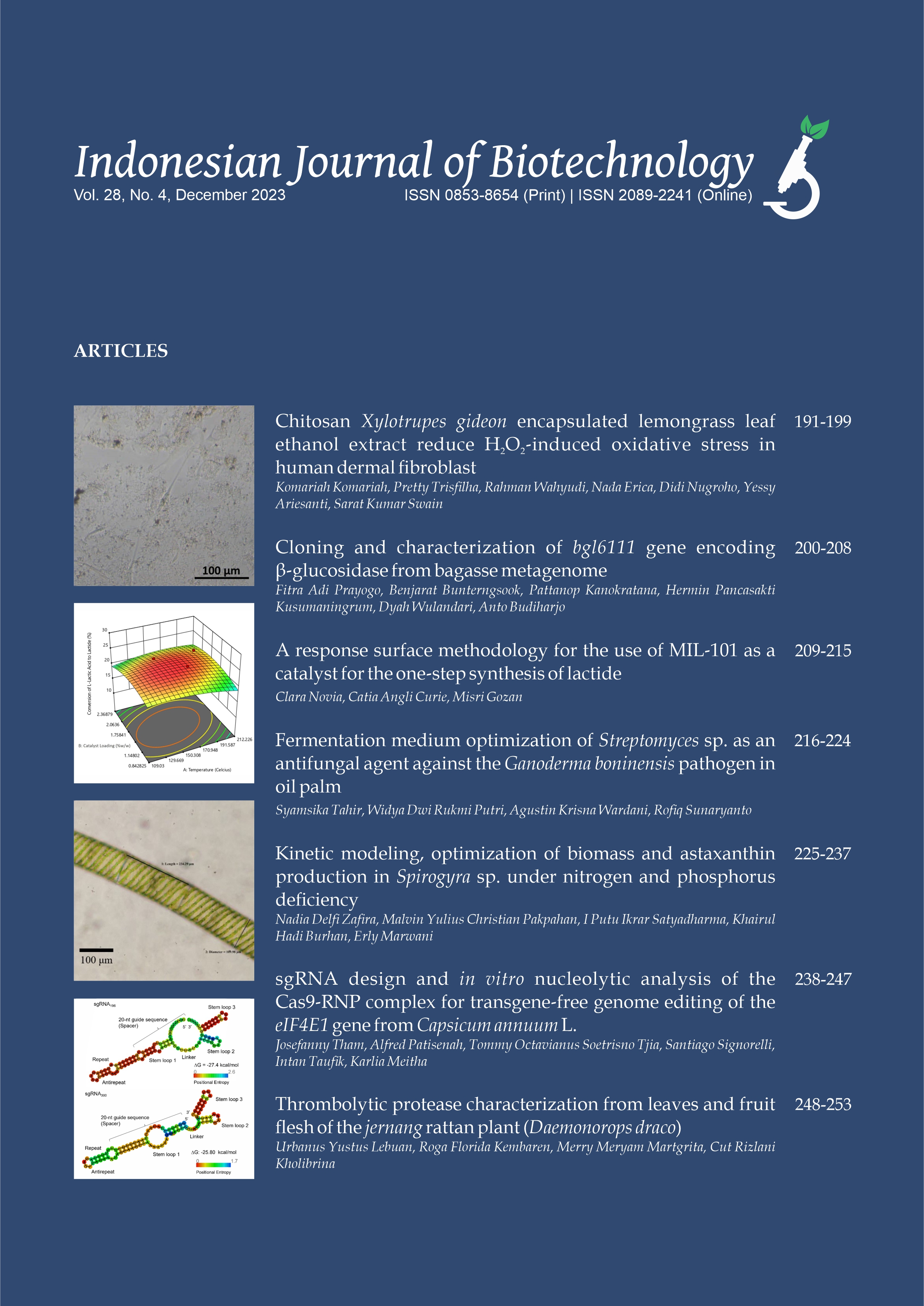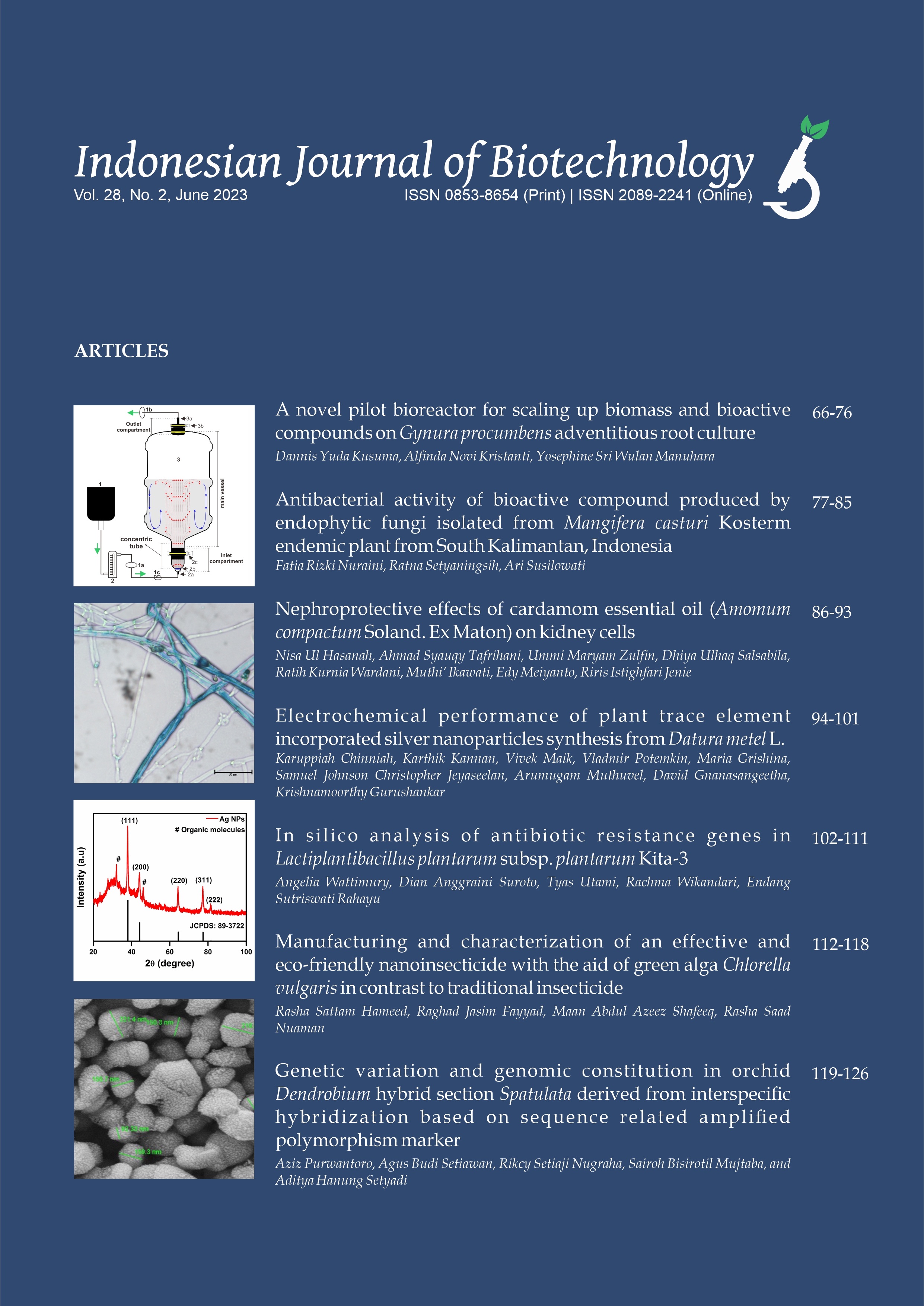Expression of haloacid dehalogenase gene and its molecular protein characterization from Klebsiella pneumoniae ITB1
Ridani Rino Anggoro(1), Enny Ratnaningsih(2*)
(1) Biochemistry Research Division, Department of Chemistry, Institut Teknologi Bandung, Jalan Ganesha 10, Bandung 40132, West Java, Indonesia
(2) Biochemistry Research Division, Department of Chemistry, Institut Teknologi Bandung, Jalan Ganesha 10, Bandung 40132, West Java, Indonesia
(*) Corresponding Author
Abstract
Keywords
Full Text:
PDFReferences
Anggoro, R. R. and Ratnaningsih, E. 2017. Subcloning of Haloacid Dehalogenase Gene from Klebsiella pneumoniae Strain ITB1 into pET-30a Expression Vector. Proceeding of The 7th Annual Basic Science International Conference Vol.3, March 8-9, Brawijaya University, 99-104.
Bergmann, J. G. and Sanik, J., 1957. Determination of Trace Amounts of Chlorine in Naphtha. Anal Chem, 292, 241-243.
Bradford, M.M., 1976. A rapid and sensitive method for the quantitation of microgram quantities of protein utilizing the principle of protein-dye binding. Anal Biochem, 72, 248-254.
Brokamp, A., Schwarze, R., and Schmidt, F., 1997. Homologous plasmids from soil bacteria encoding D, L-halidohydrolases. Curr Microbiol, 34, 97-102.
De Jong, R.M. and Djikstra, B.W., 2003. Structure and mechanism of bacterial dehalogenase: Different ways to cleave a carbon-halogen bond. Curr Opin Struc Bio, 13, 722-730.
De Lorenzo, V., 2008. Systems biology approaches to bioremediation. Curr Opin Biotechnol, 19, 579-589.
Dórea, J.G., 2008, Persistent, bioaccumulative and toxic substances in fish: Human health considerations. Sci Total Environ, 400, 93-114.
Esteve-Nunez, A., Caballero, A., and Ramos, J.L., 2001. Biological Degradation of 2,4,6-Trinitrotoluene. Microbiol Mol Biol Rev, 65, 335-352.
Fetzner, S., and Lingens, F., 1994. Bacterial dehalogenases: biochemistry, genetics, and biotechnological applications. Microbiol Mol Biol Rev, 58, 641-685.
Iwata, H., Tanabe, S., Sakai, N., and Tatsukawa, R., 1993. Distribution of persistent organochlorines in the oceanic air and surface seawater and the role of ocean on their global transport and fate. Environ Scie Technol, 27, 1080-1098.
Janssen, D.B., Pries, F., and Van der Ploeg, J.R., 1994. Genetics and biochemistry of dehalogenating enzymes. Annu Rev Microbiol, 48, 163-191.
Janssen, D.B., Oppentocht, J.E., and Poelarends, G.J., 2001. Microbial dehalogenation. Curr Opin Biotechnol, 12, 254-258.
Muller, R., and Lingens, F., 1986. Microbial degradation of halogenated hydrocarbons: A biological solution to pollution problems? Angew Chem Int Ed Engl, 25, 779-789.
Pervova, M.G., Kirichenko, V.E., and Pashkevich, K.I., 2002. Determination of chloroacetic acids in drinking water by reaction gas chromatography. J Anal Chem, 57, 326-330.
Slater, J.H., Bull, A.T., and Hardman, D.J., 1995. Microbial dehalogenation. Biodegradation, 6, 181-189.
Sambrook, J., Fritsch, E., and Maniatis, T., 1989. Molecular cloning: a laboratory manual (second edition). New York: Cold Spring Harbor Laboratory Press Cold Spring Harbor.
Tahya, C.Y. and Ratnaningsih, E. 2015. Cloning and sequencing of haloacid dehalogenase gene from Klebsiella pneumoniae ITB1. Procedia Chemistry, 16, 121-128.
Top, E.M., and Springael, D., 2003. The role of mobile genetic elements in bacterial adaptation to xenobiotic organic compounds. Curr Opin Biotechnol, 14, 262-269.
Wang, H., Pang, H., Bartlam, M., and Rao, Z., 2005. Crystal structure of human e1 enzyme and its complex with a substrate analog reveals the mechanism of its phosphatase-enolase. J. Mol. Biol., 348, 917-926.
Weightman, A.J., and Slater, J.H., 1980, Selection of Pseudomonas putida strains with elevated dehalogenase activities by continuous culture growth on chlorinated alkanoic acids. J Gen Microbiol, 121, 187-193.
Weightman, A.J., Weightman, A.L., and Slater, J.H., 1985. Toxic effects of chlorinated and brominated alkanoic acids on Pseudomonas putida PP3: Selection at high frequencies of mutations in genes encoding dehalogenases. Appl Environ Microbiol, 49, 1494-1501.
Article Metrics
Refbacks
- There are currently no refbacks.
Copyright (c) 2017 The Author(s)

This work is licensed under a Creative Commons Attribution-ShareAlike 4.0 International License.









